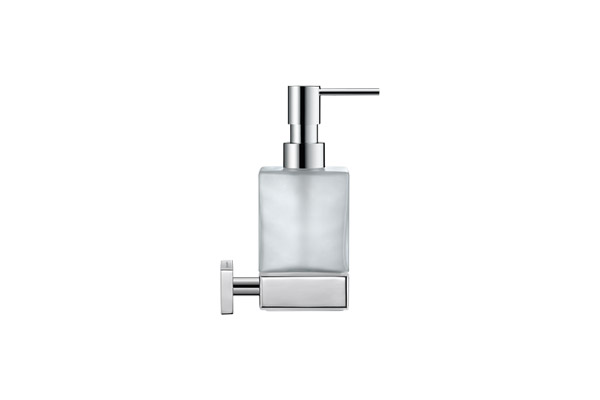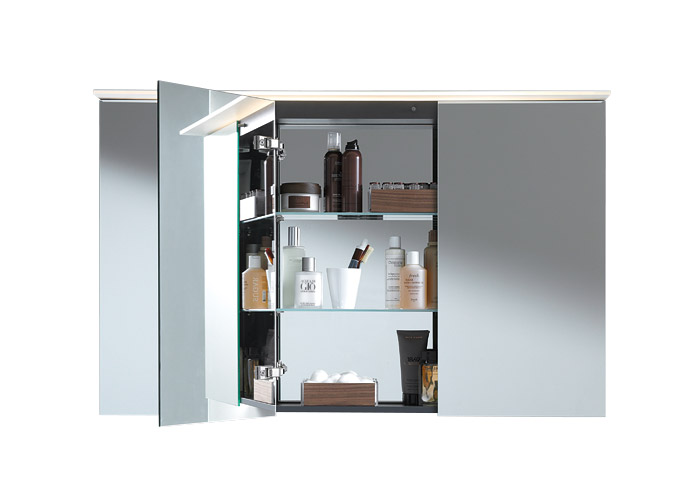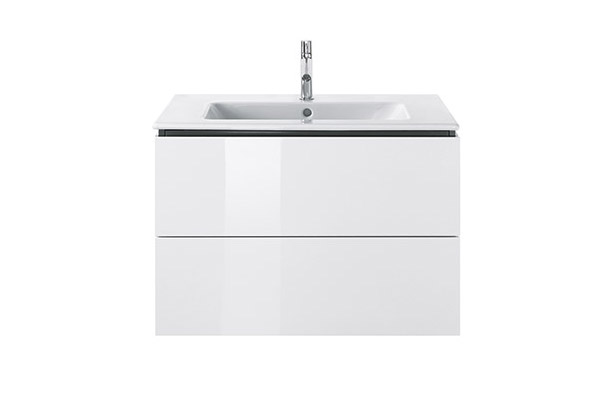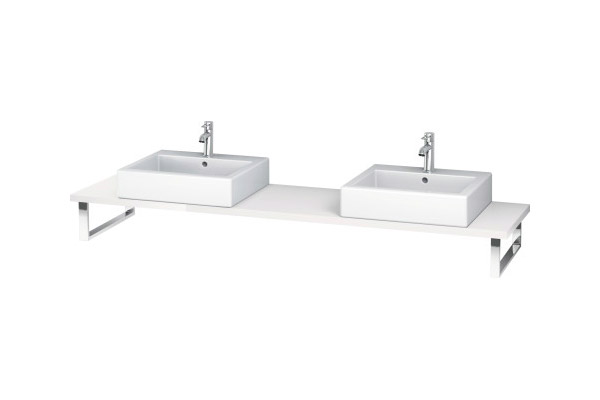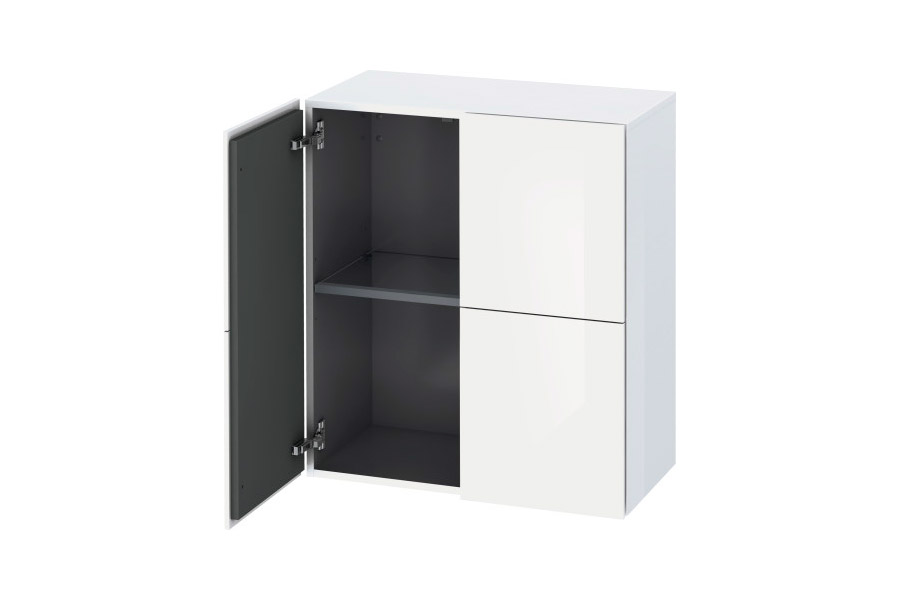
Bathroom Sinks | High Quality & Modern Design | Duravit
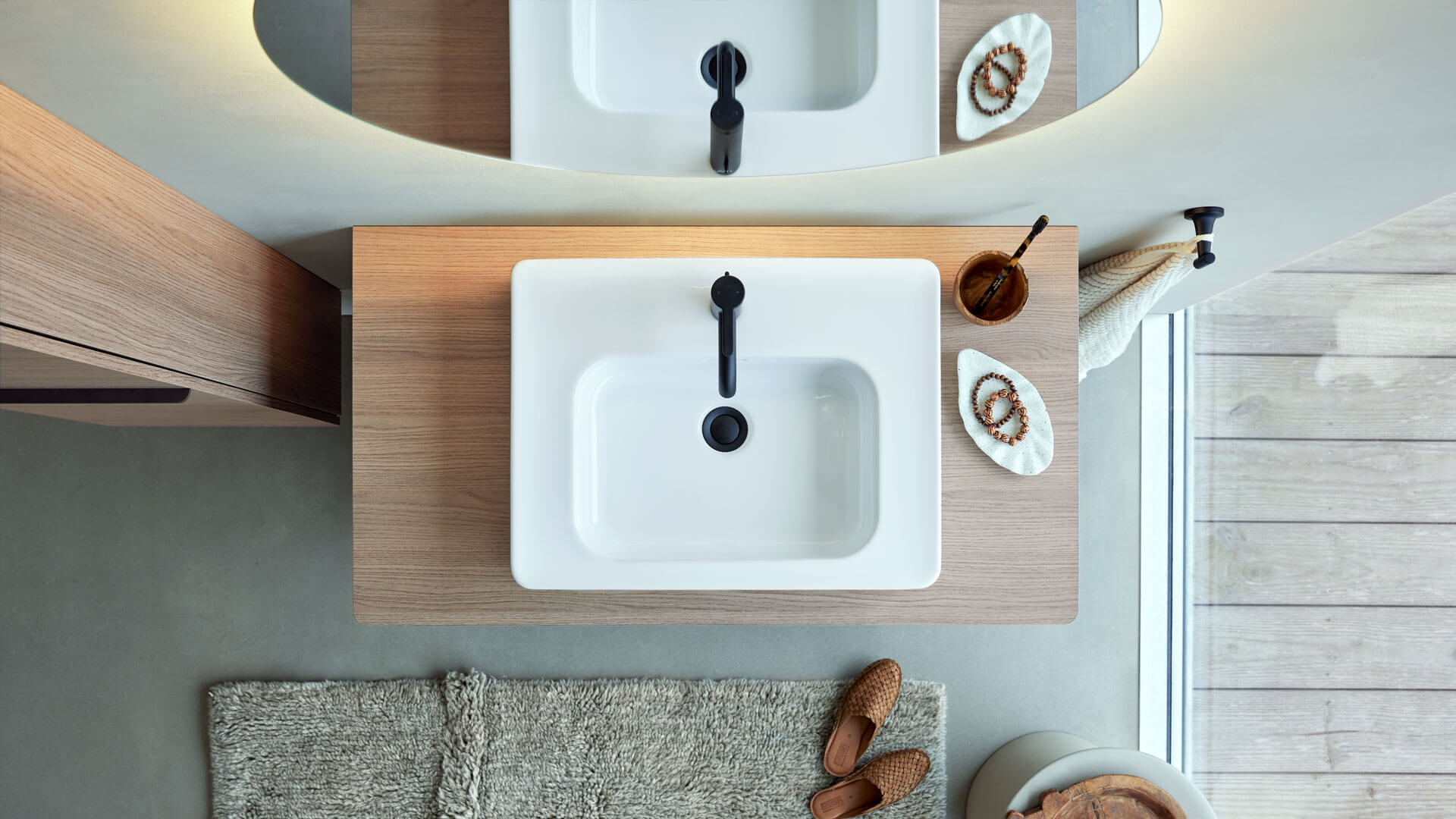
Chậu rửa
High-quality bathroom products with a modern design
Tìm hiểu thêm
A Wide Variety in the World of Sinks
When it comes to bathroom sinks, there are hundreds of different sizes, shapes, colors and designs. A sink that is relatively small, for example, can be the ideal solution for the sink in your guest bathroom. But the nature of ceramics also makes a wide variety of shapes possible. Anything is possible, from square bathroom sinks to classic oval designs. This lets you design your bathroom so it meets all of your needs and reflects your style.
Technically speaking, the terms sink, washbasin, and vanity have different definitions, though they are often used more or less synonymously. In everyday speech, we often use any of these terms to refer to the entire vanity or just the ceramic washbasin. We use the term vanity to refer to the combination of ceramic washbasin and the furniture that supports it. In order to avoid confusion, we will use the term sink when referring to just the ceramic washbasin.
Technically speaking, the terms sink, washbasin, and vanity have different definitions, though they are often used more or less synonymously. In everyday speech, we often use any of these terms to refer to the entire vanity or just the ceramic washbasin. We use the term vanity to refer to the combination of ceramic washbasin and the furniture that supports it. In order to avoid confusion, we will use the term sink when referring to just the ceramic washbasin.

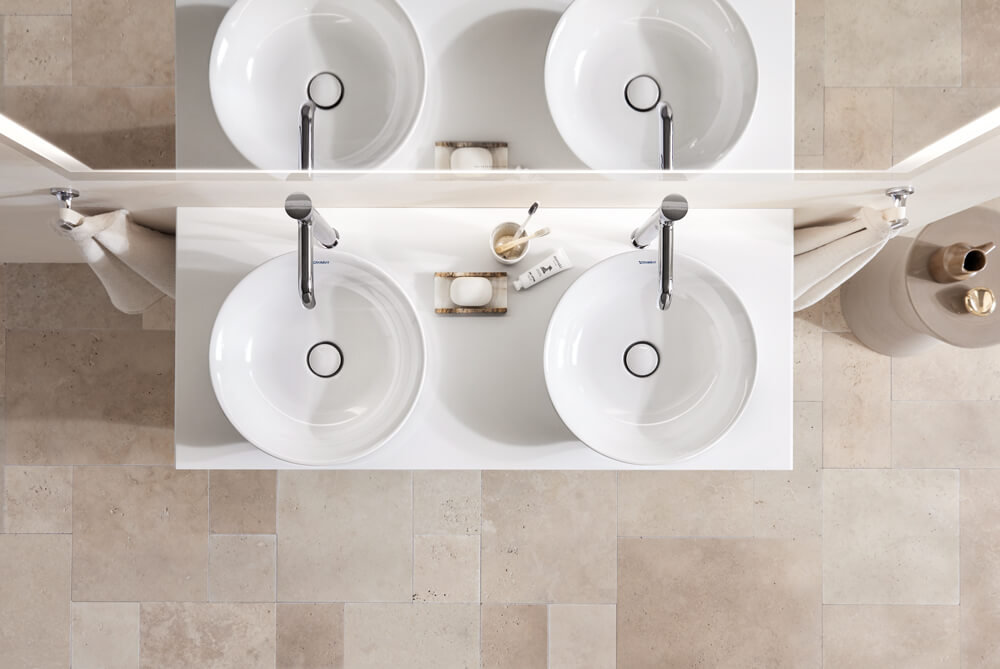
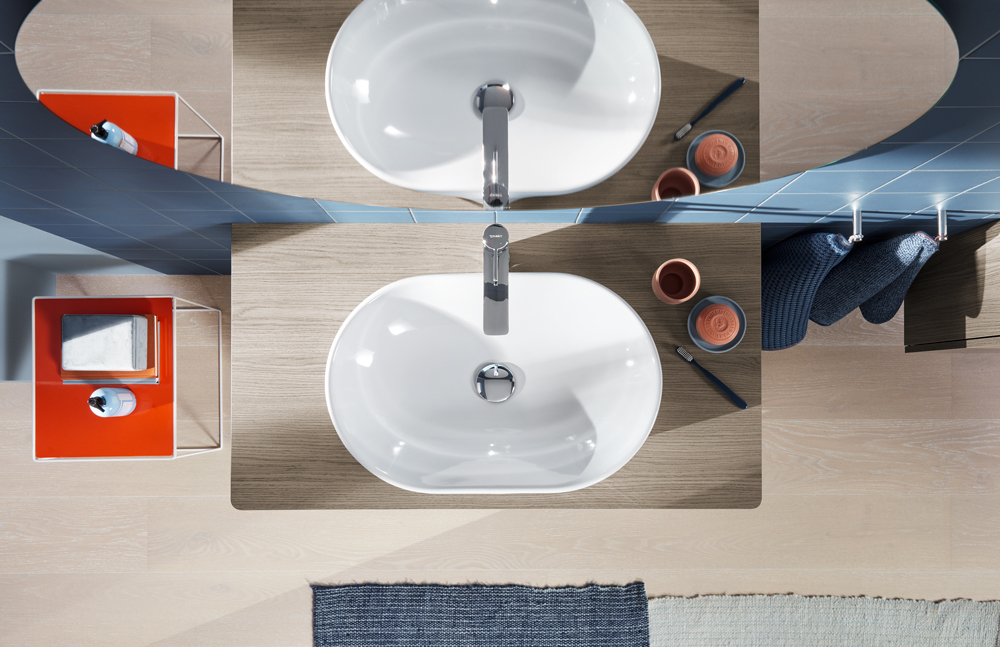
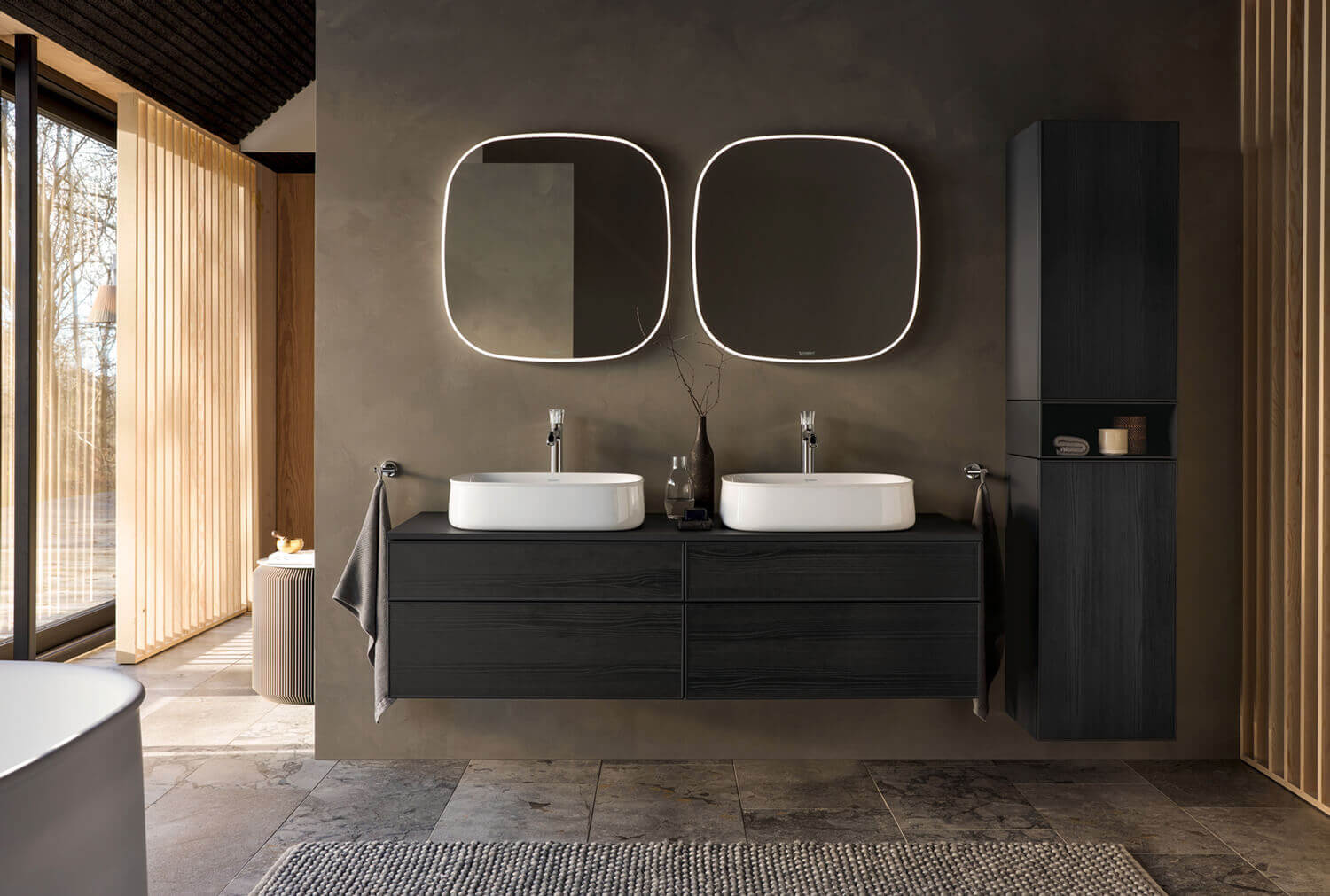
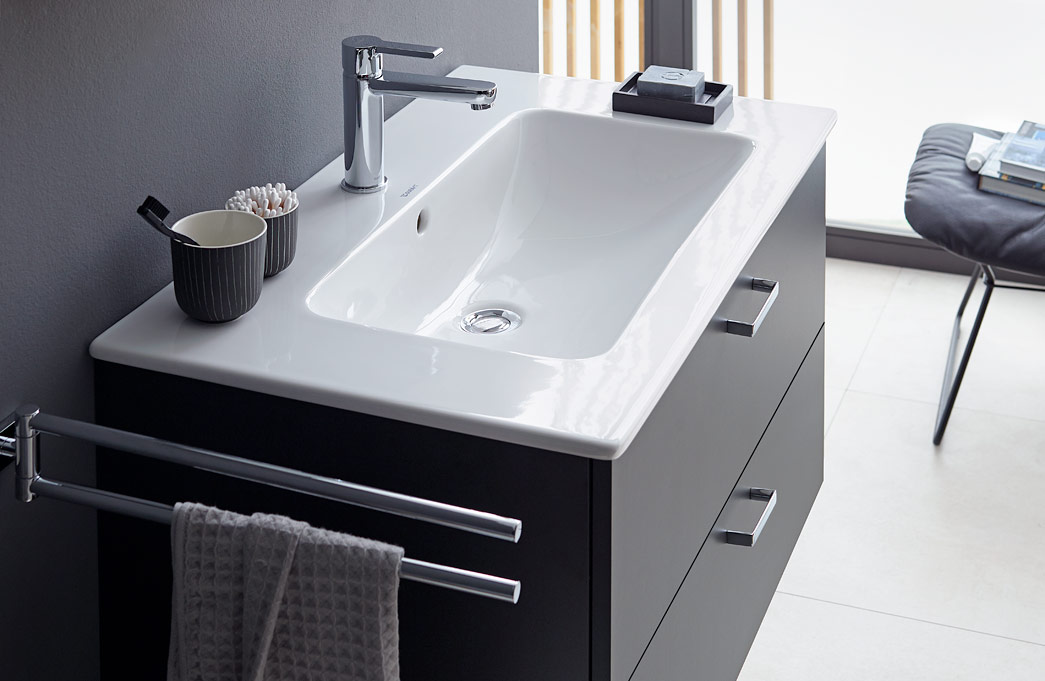
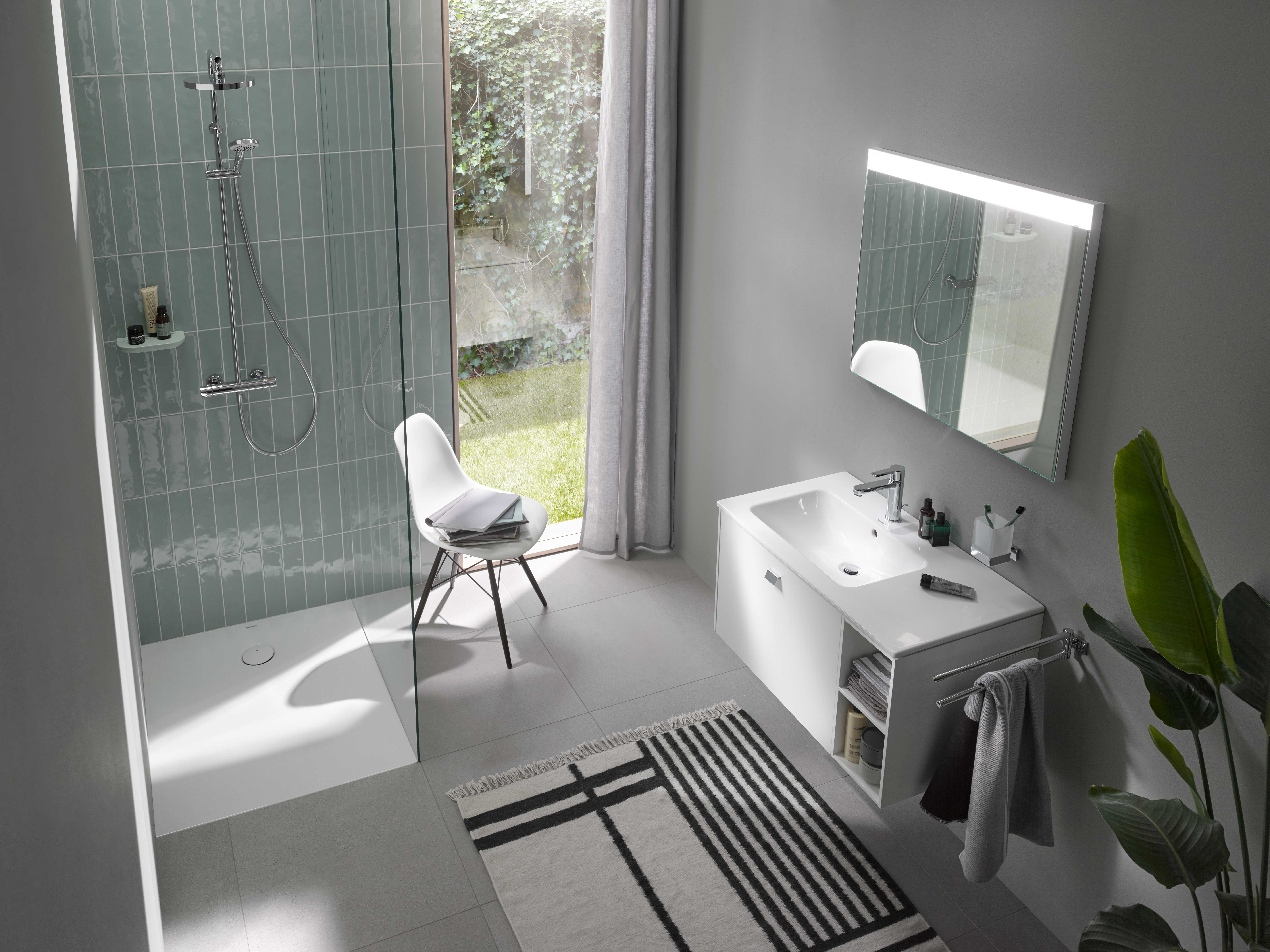
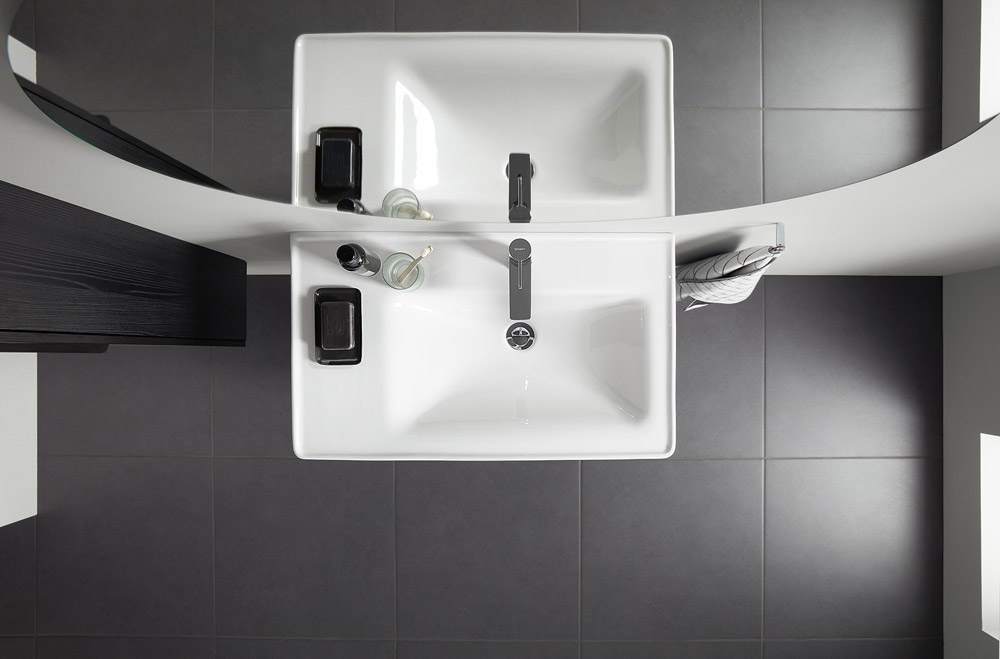
Different Installation Types for Sinks
The majority of sinks in bathrooms are mounted on the wall, which ensures they are adequately supported at all times.
Sinks and hand sinks
These are mounted directly to the wall or they can have a standing look if they are supported by a half or a full pedestal, for example. The main purpose of the pedestal is to conceal the trap and the plumbing connections. It also helps to make cleaning easier.
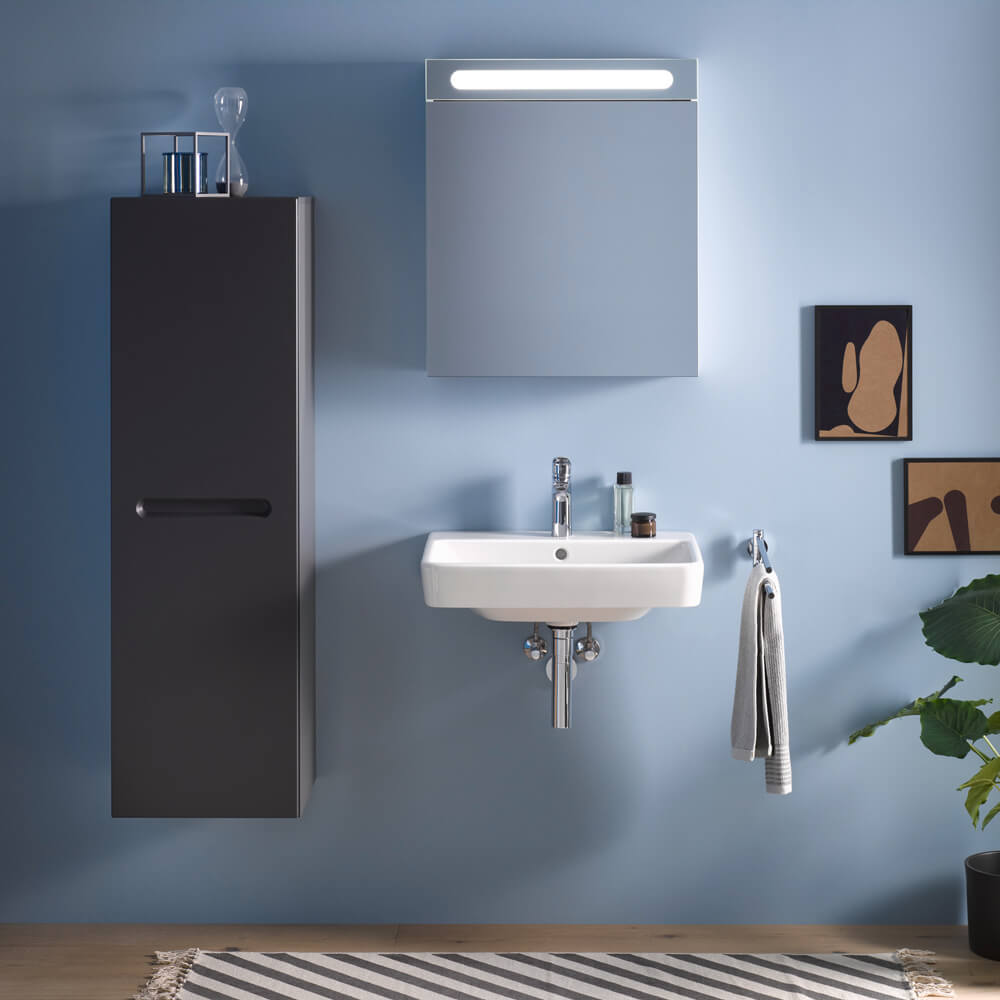


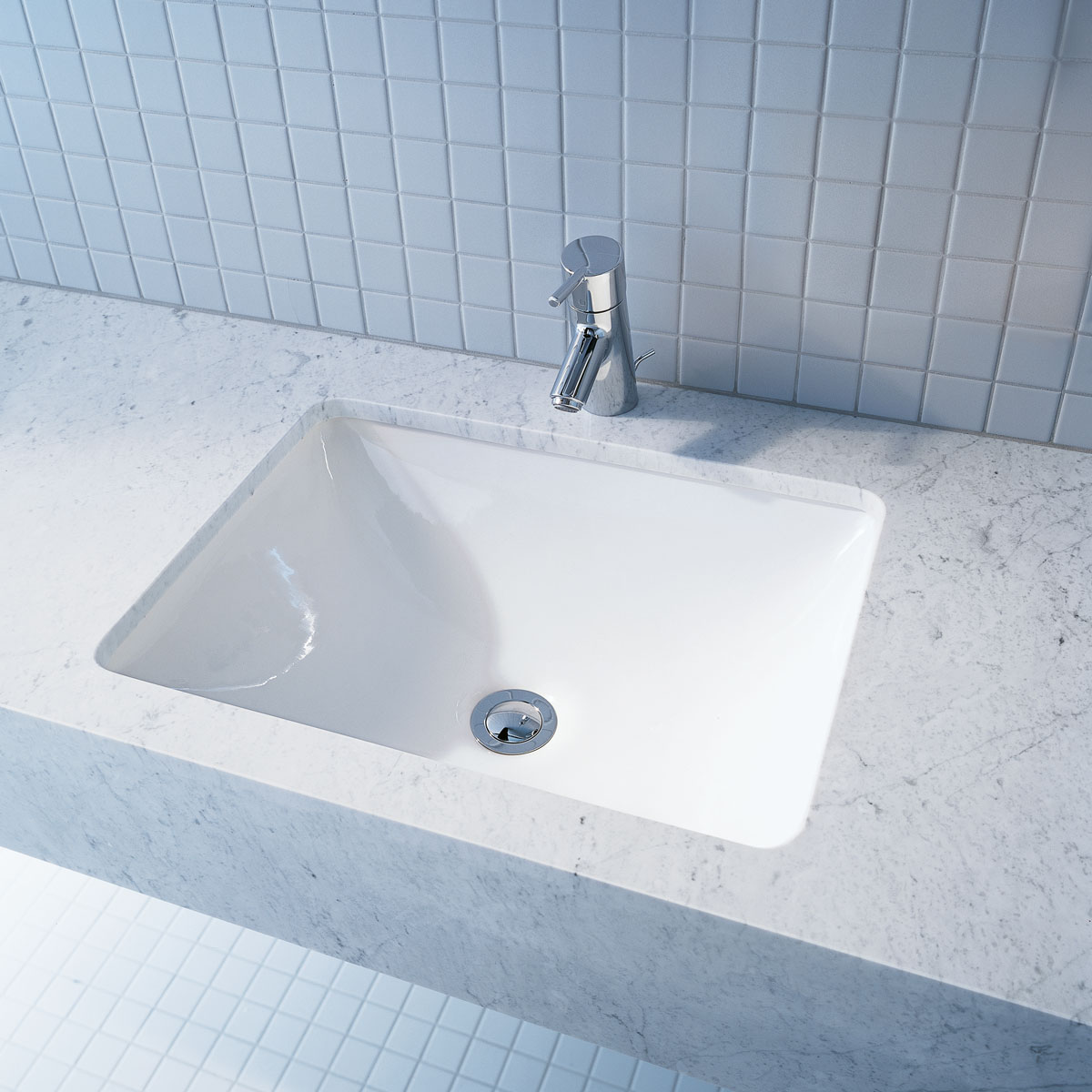
Countertop, semi-recessed & built-in sinks
These cannot be installed in the bathroom on their own; they require a suitable bathroom vanity unit or countertop. Countertop sinks are, as the name suggests, placed on top of the furniture. This means that the vanity unit and the ceramic washbasin usually stand out from each other. Built-in and semi-recessed sinks have a different installation method. In this case, the sink is either wholly or partially built into the vanity or the console countertop.
Different Shapes and Sizes of Sinks
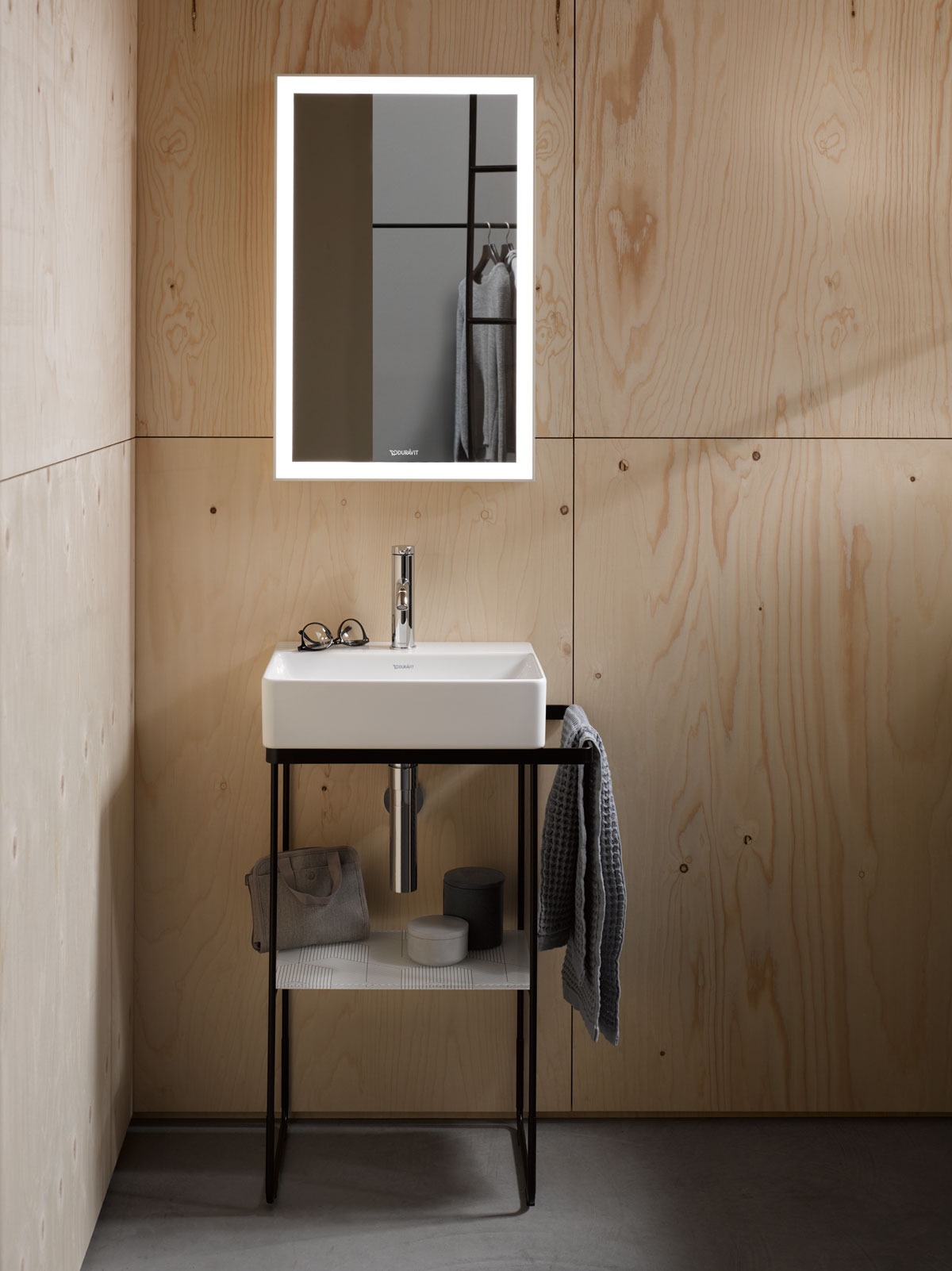
Sinks are also different in terms of shape and size. Hand sinks are especially well suited for guest bathrooms because they are small and compact. Duravit also offers many other compact sinks and furniture designs for smaller bathrooms. Thanks to their narrow profiles, these items don't extend out into the room, which makes them especially good for tight spaces.
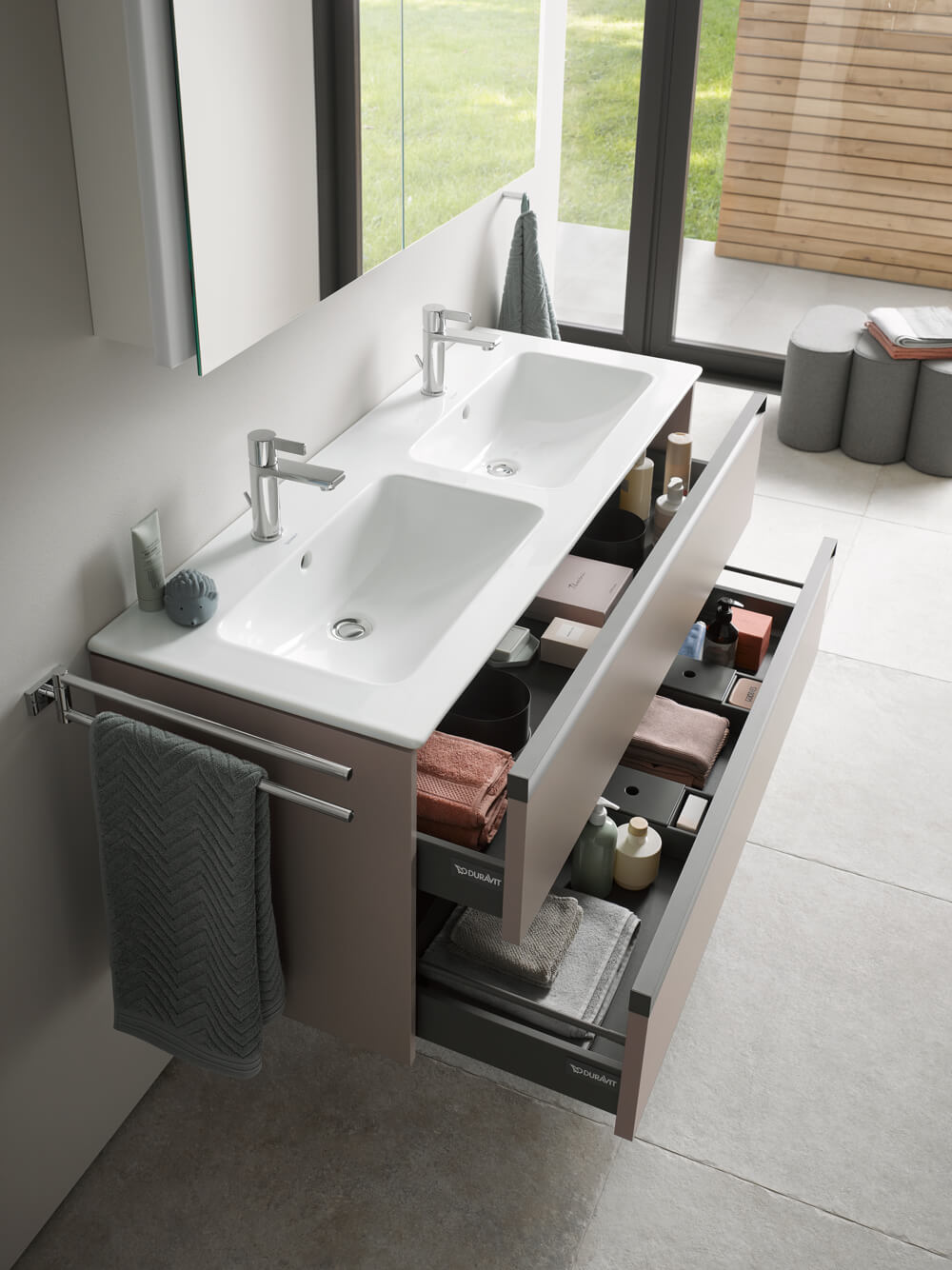
Double sinks require sufficient space for optimal installation and to be able to take full advantage of their design. When double sinks are in the right place, they offer impressive functionality: Several people can use them at the same time - perfect for households with more than one person such as families. They can be used in large and small bathrooms alike, depending on the layout of the room. Details and exact dimensions can be found on the respective product pages.
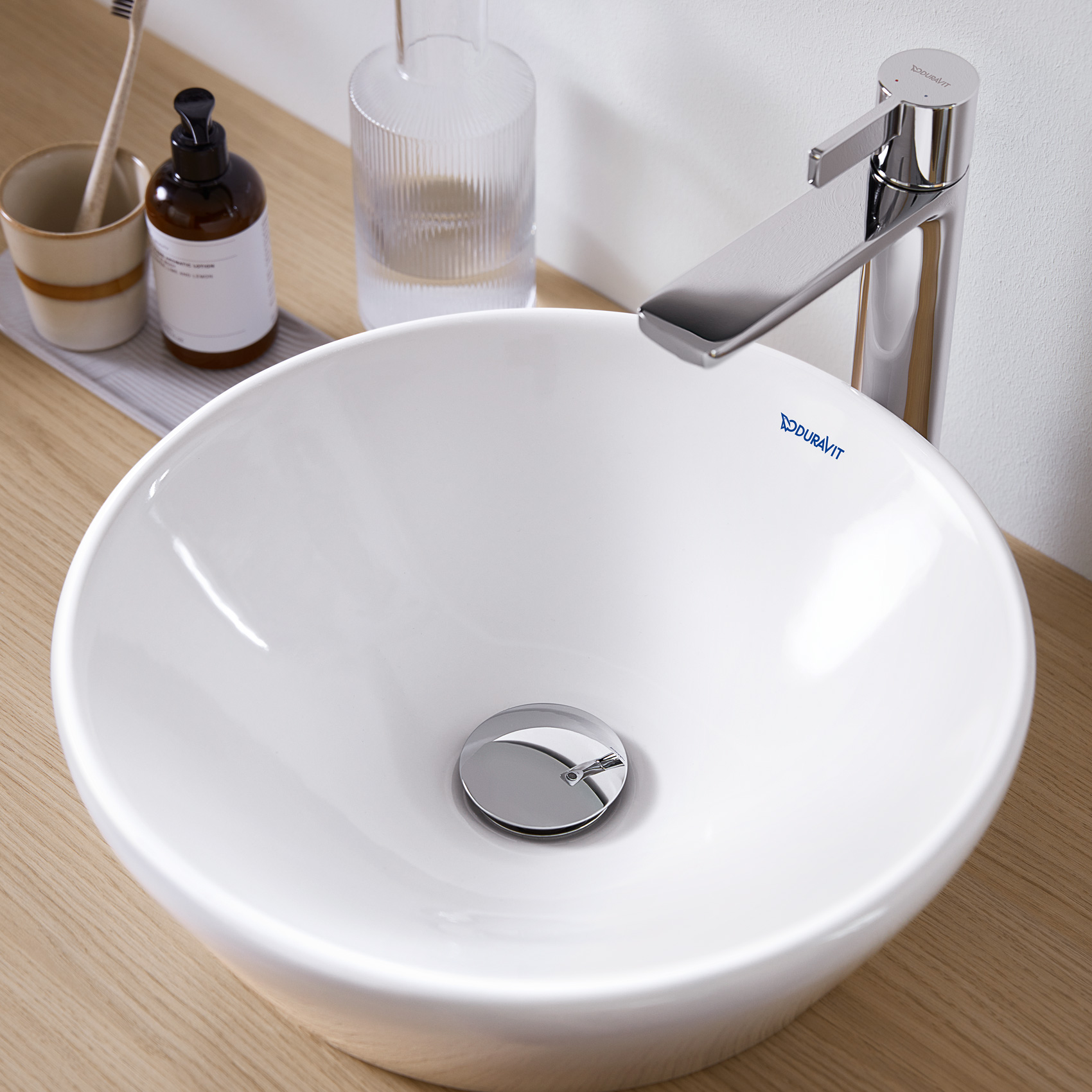
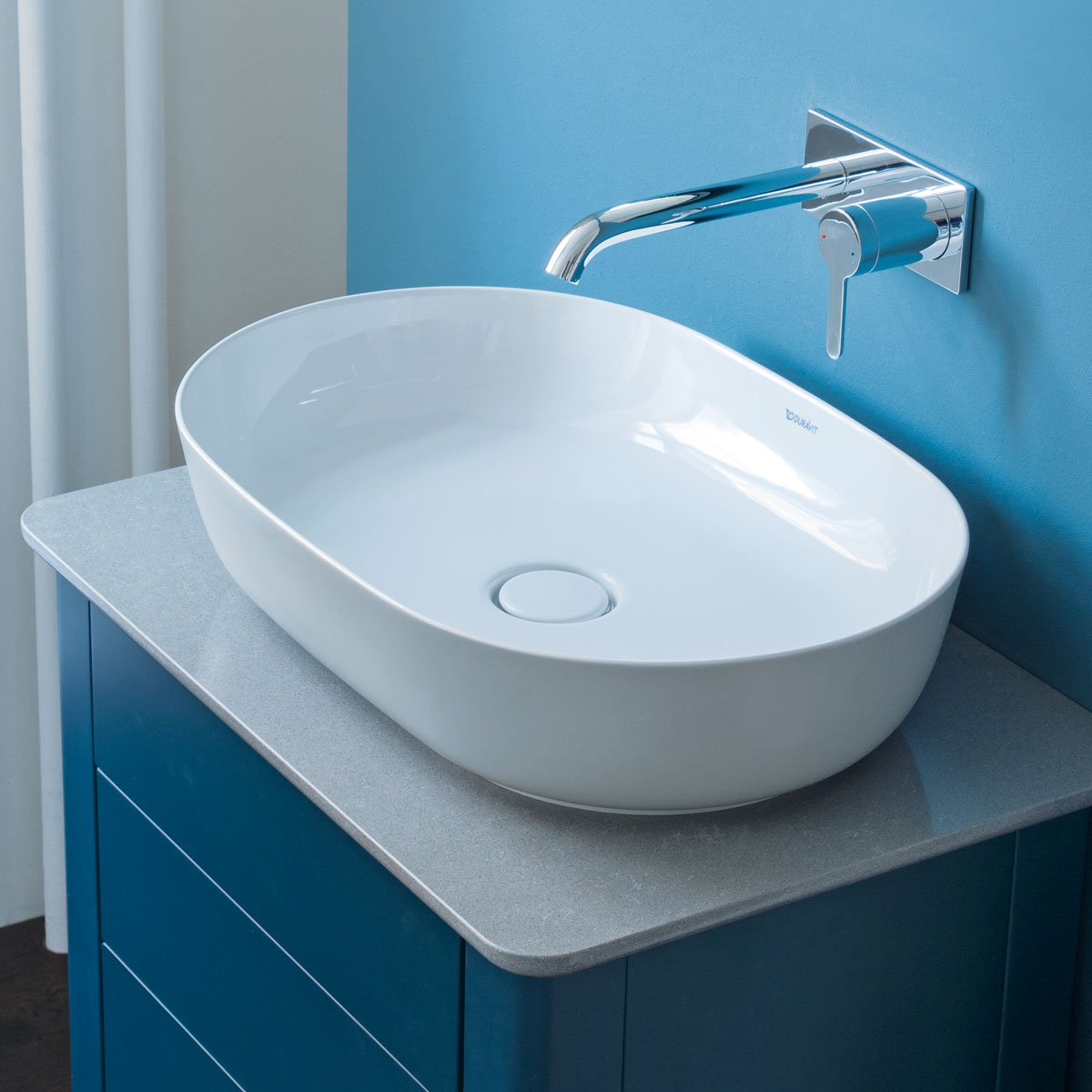
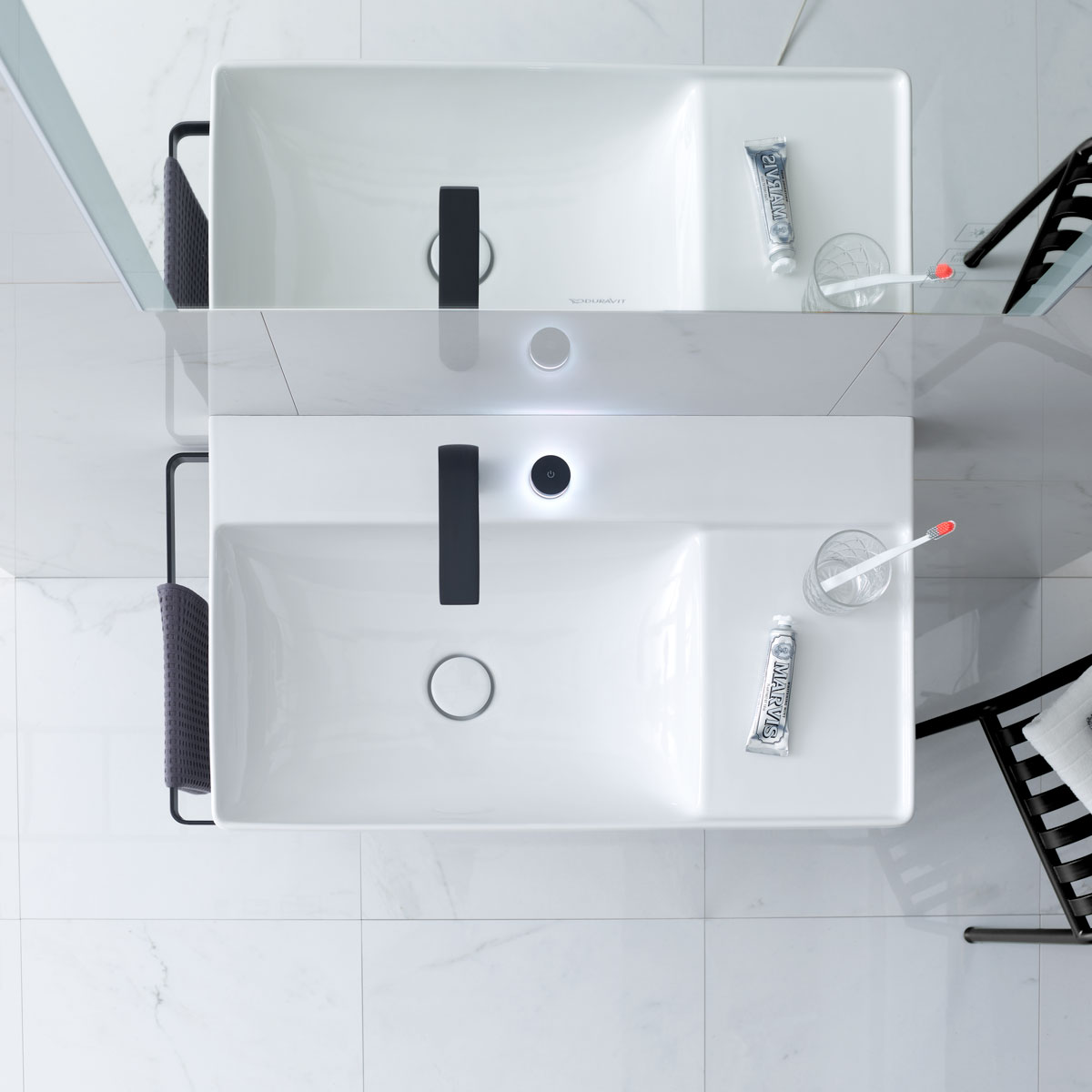
As far as the shape of the sink is concerned, many different versions are available. Duravit countertop washbowls are not the only type of sink that is available in round, oval, square and rounded shapes. In addition to the countertop washbowl itself, these sinks can also provide additional storage space. This would be the case, for example, with an asymmetrical sink or if the ceramic has a flat area around the tap hole. This is the back edge of the sink where the faucet is installed.
Tip: It's not just the many shapes and sizes of sinks that provide a variety of possibilities. There are also many options for the color scheme: Duravit offers ceramics that range from White to Anthracite Matte to two-tone designs.
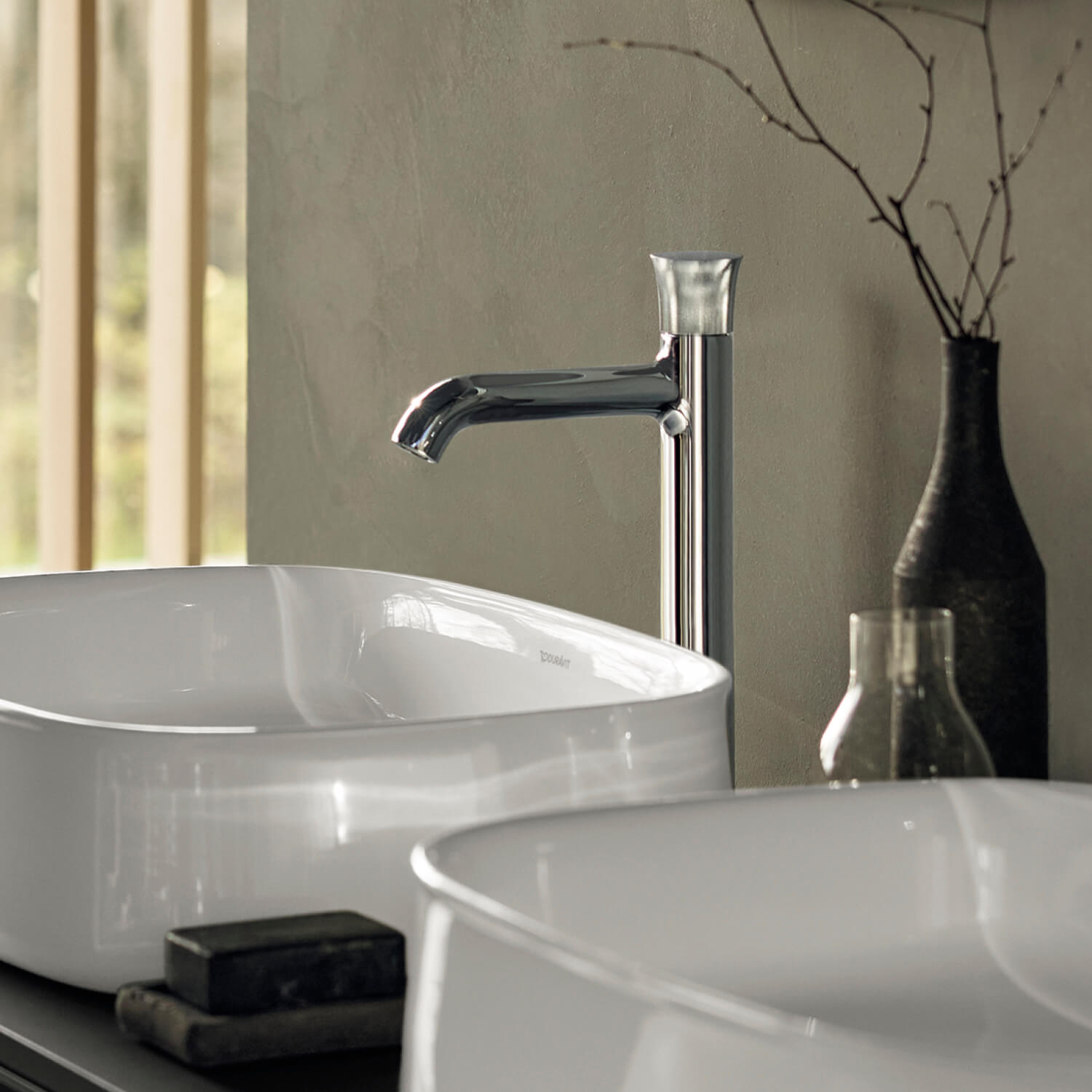
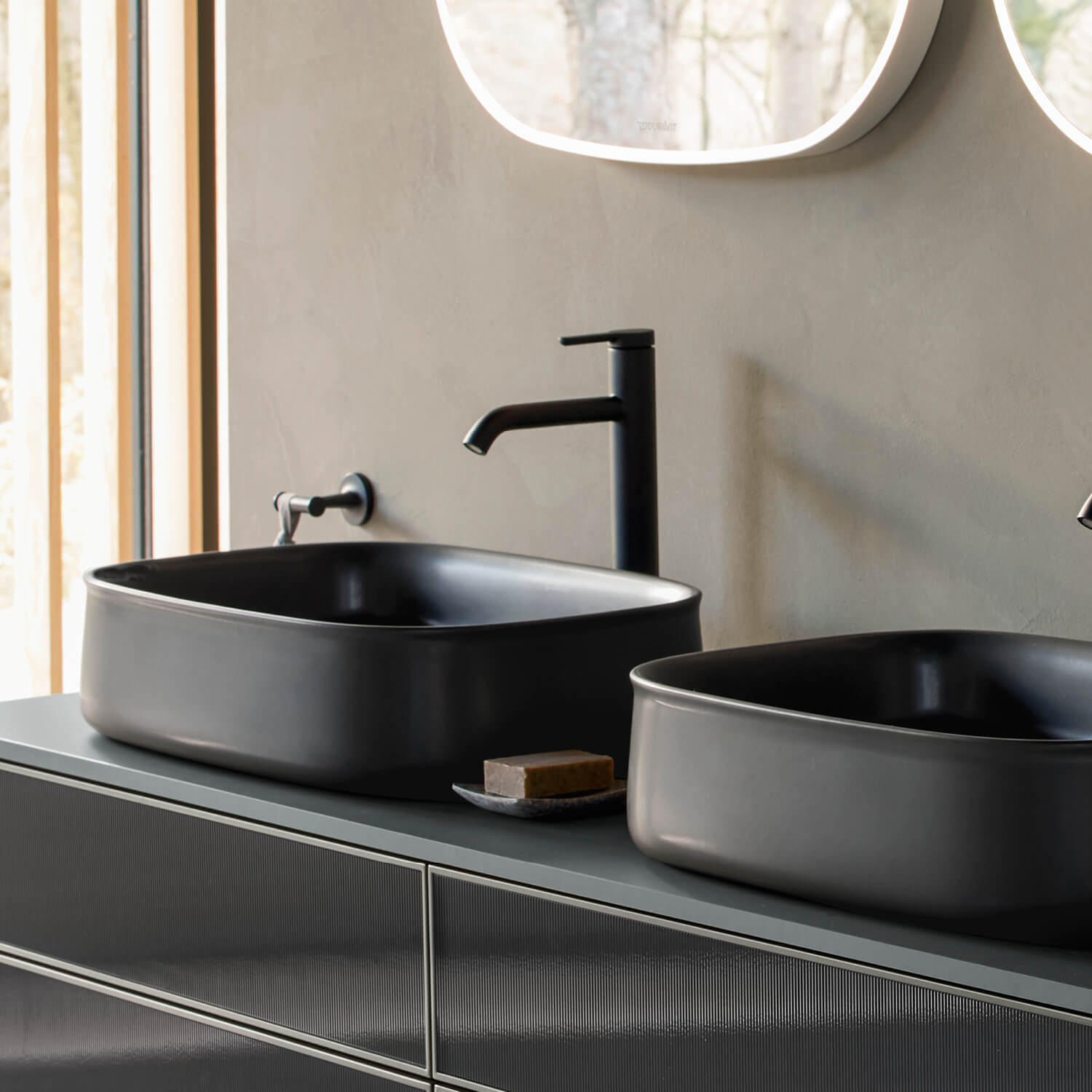
Sinks with and without Overflow
An overflow is a small opening at the back edge of the sink that allows water to drain out of the drainpipe. The main purpose of this opening is to prevent the bathroom from flooding if, for example, the water is left running and the drain is plugged with a stopper. Sinks for the bathroom are generally available with or without an overflow hole. We can offer the right valves depending on whether you decide on a sink with an overflow opening or without one. Here's a basic overview:
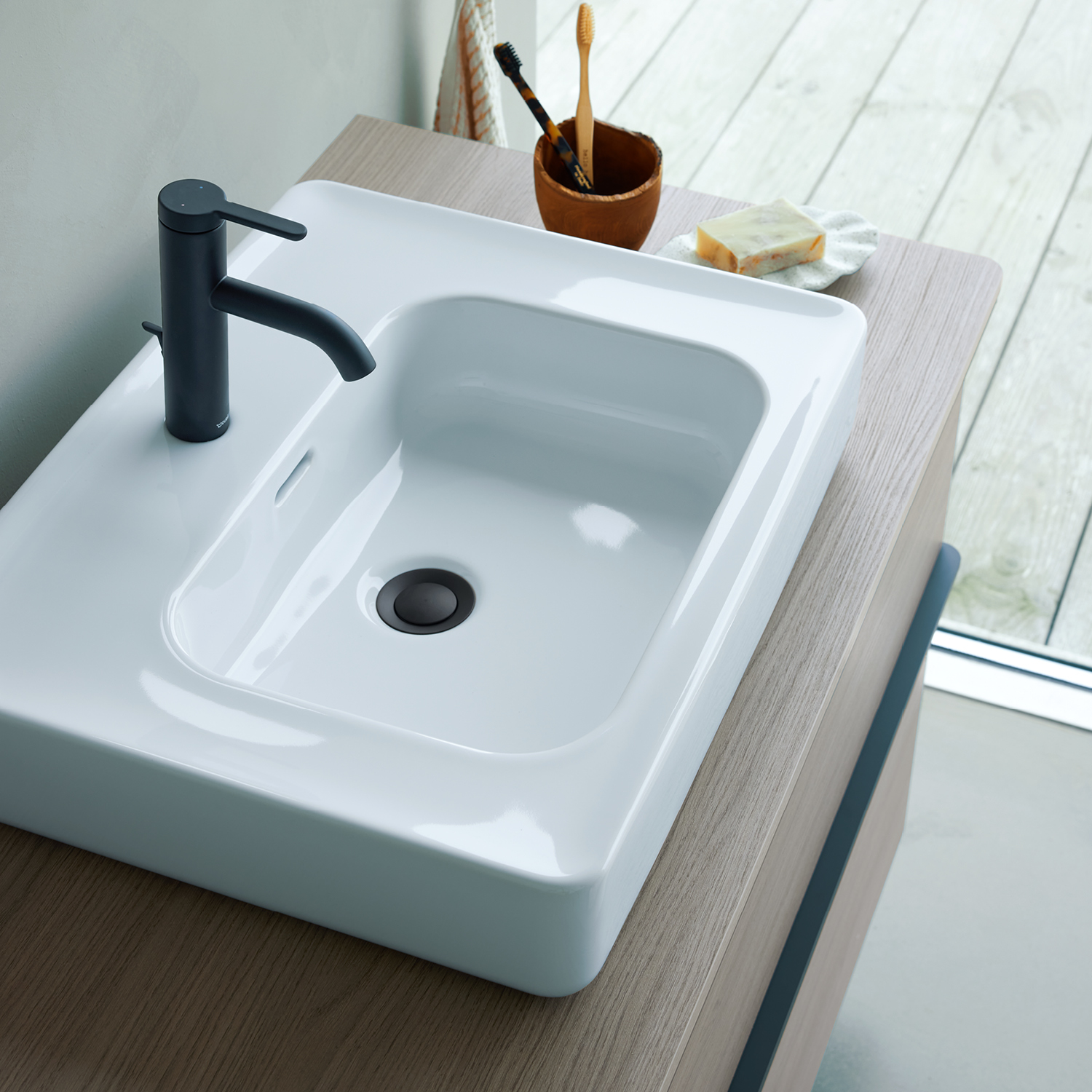
1. Sinks with overflow:
Standard drain valves, ceramic drain valves, push-open (controlled by finger pressure)

2. Sinks without overflow:
Stem valves (cannot be closed)
Attention: If the sink has an overflow hole, closable valves can be combined. If there is no overflow hole, then drain valves that cannot be closed are recommended. This prevents the water from spilling over the edge of the sink.
Sink Materials
In our product range you will find Duravit sinks made either from conventional bathroom ceramics or from our specially developed proprietary material called DuraCeram® .
Bathroom ceramics
This hygienic material typifies high quality and is made of natural raw materials that are coated with an attractive glaze. In addition to its impressive look, this glossy finish is also impressive in terms of its service life: It is resistant to heat, abrasion, scratching and UV rays.
DuraCeram®
This material is one of Duravit's proprietary developments. This patented formula creates high-strength ceramics of an even more elegant quality and it reduces the weight of the sink. This makes it possible to produce especially thin-walled sinks with linear designs without losing anything in terms of quality, strength or ease of maintenance. Sustainability is another advantage. Since it uses fewer raw materials, less energy is needed to produce it and CO2 emissions are reduced in the production process.
Our sinks can also be optionally finished with our WonderGliss coating. WonderGliss is fired into the ceramic, creating a water-repellent surface that will keep your sink clean and hygienic for years to come. Residues such as lime and dirt are easy to rinse off the smooth surface using nothing more than water.
Sinks with and without a Vanity
Most sinks are mounted directly on the wall and do not necessarily need a vanity unit to support them - they can simply be mounted freely on the bathroom wall. This includes the following sinks from Duravit:

1. Classic sinks
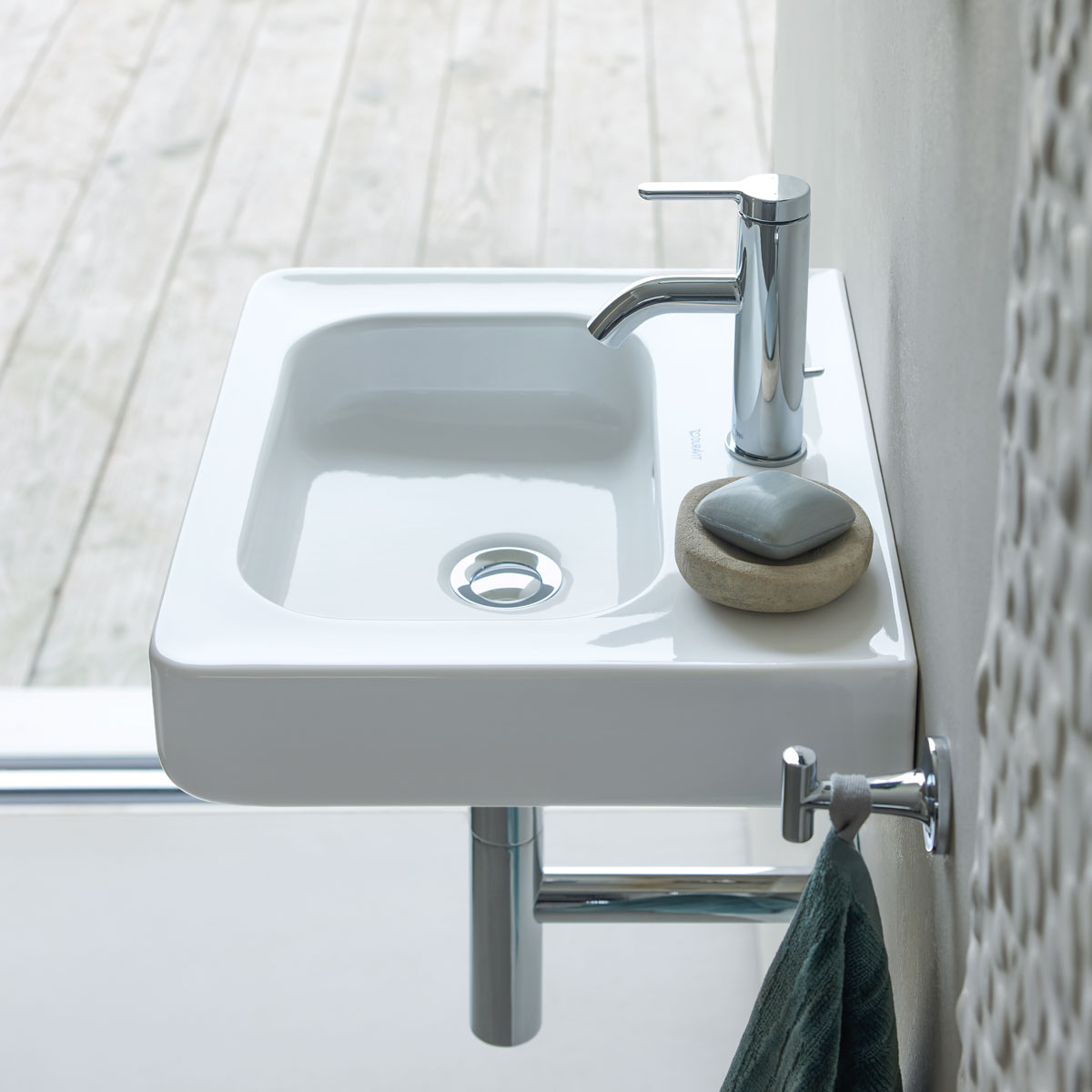
2. Guest bathroom sinks
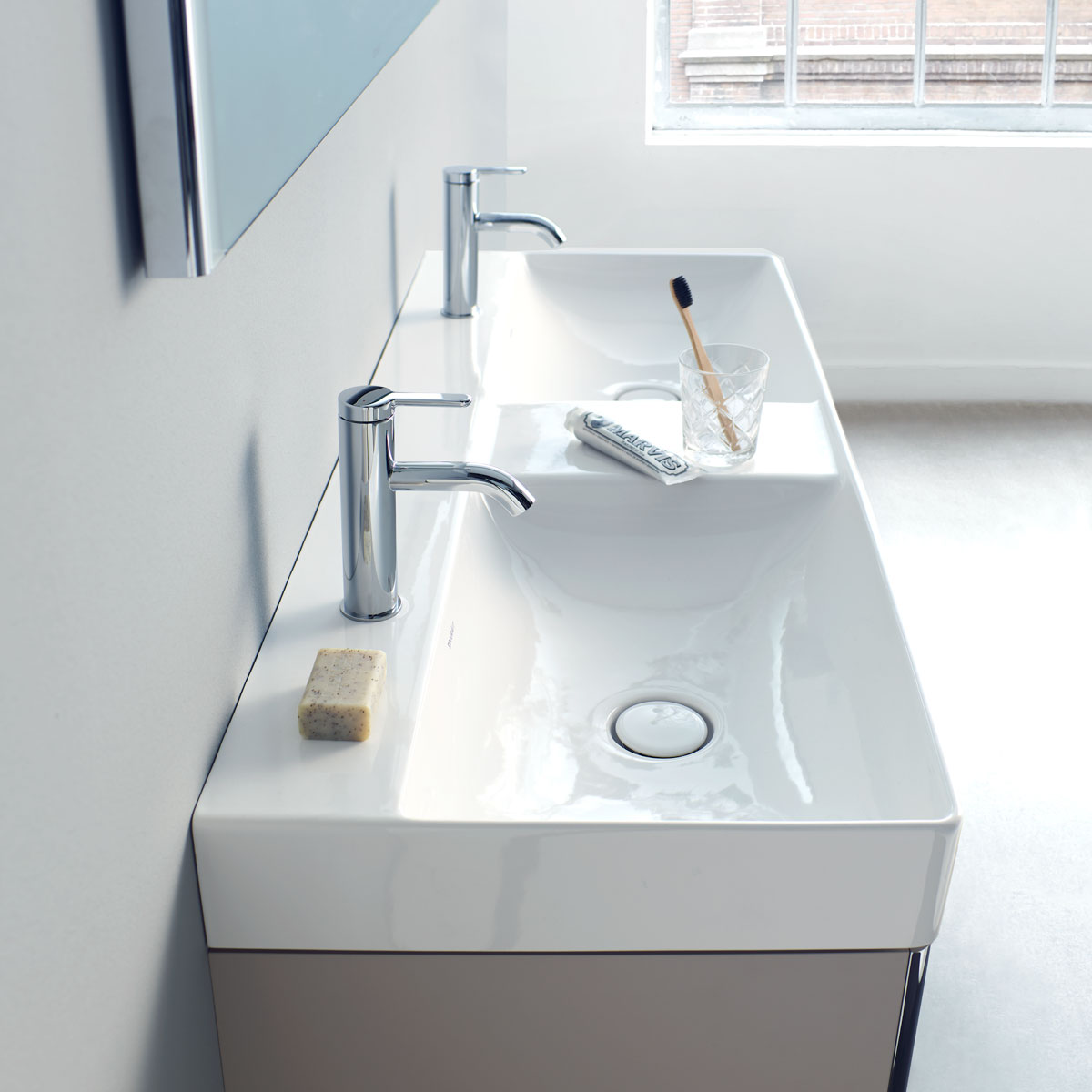
3. Double sinks
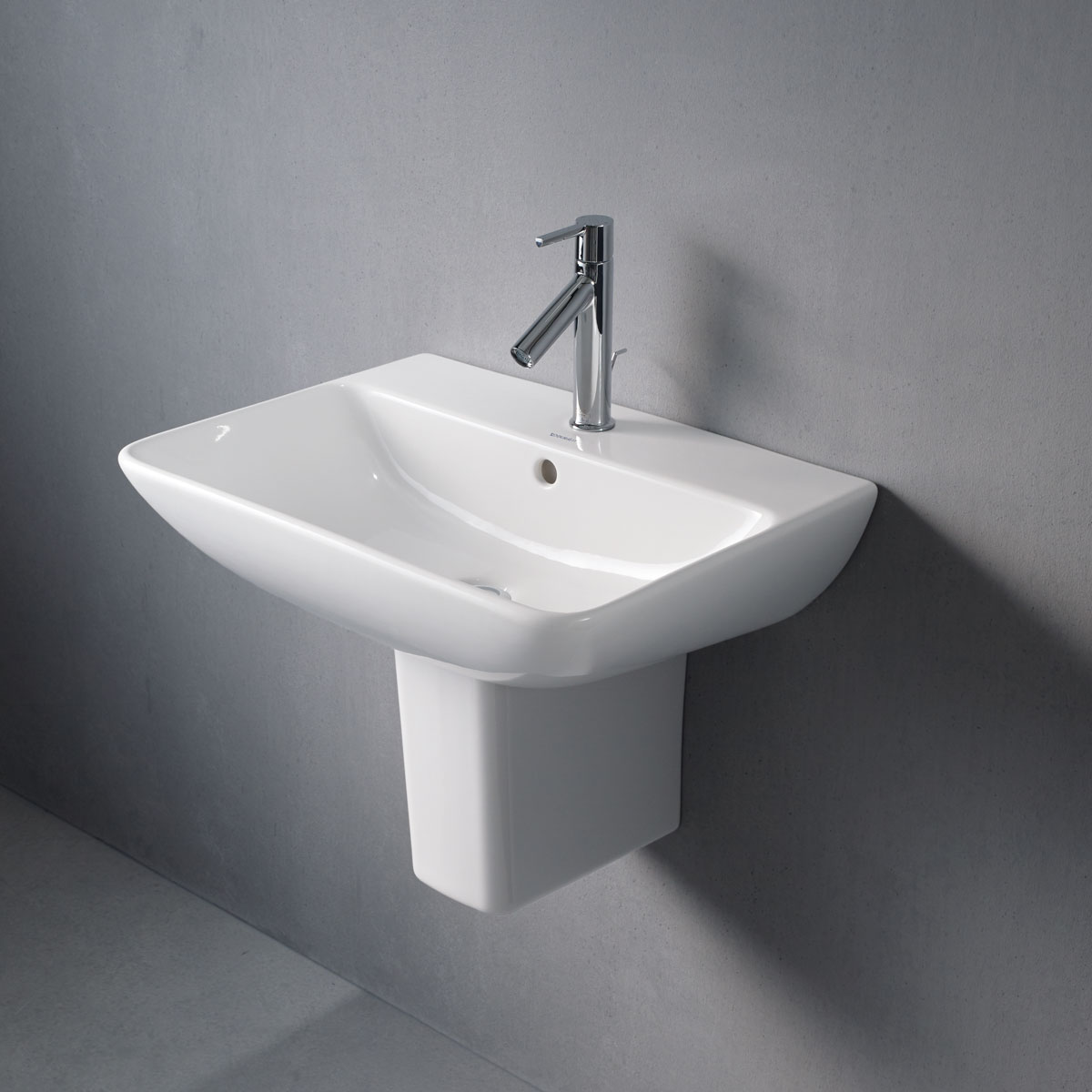
4. Sinks with a pedestal & half pedestal
Depending on the model, the first three types of sinks can be combined with either a bathroom vanity unit or a metal frame. Sinks with a half pedestal or a full pedestal do not have this option because of the ceramic siphon cover. A base vanity unit is necessary if the sink is not mounted directly on the wall or if the design is not intended to work without a vanity for support. This applies to countertop sinks, for example.
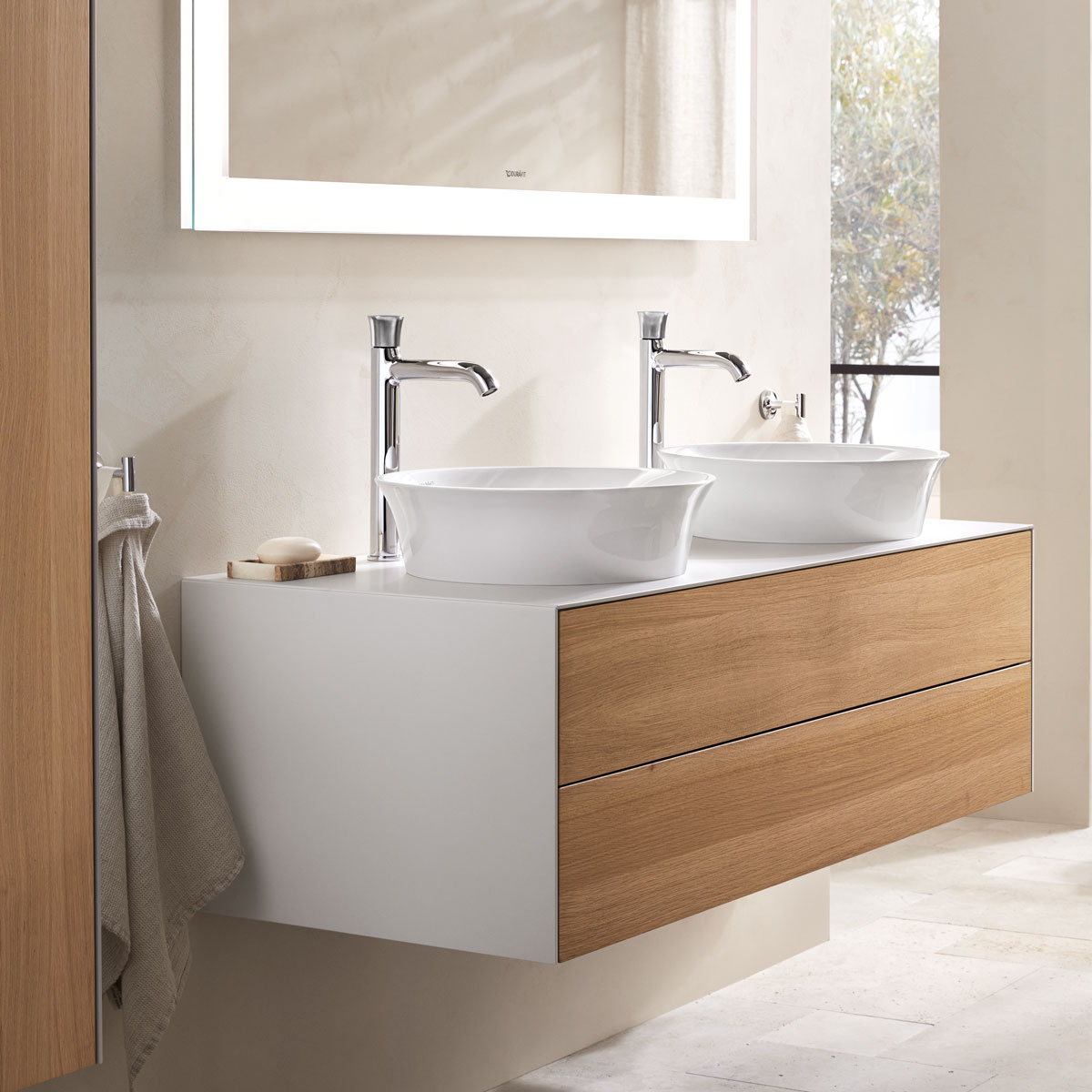
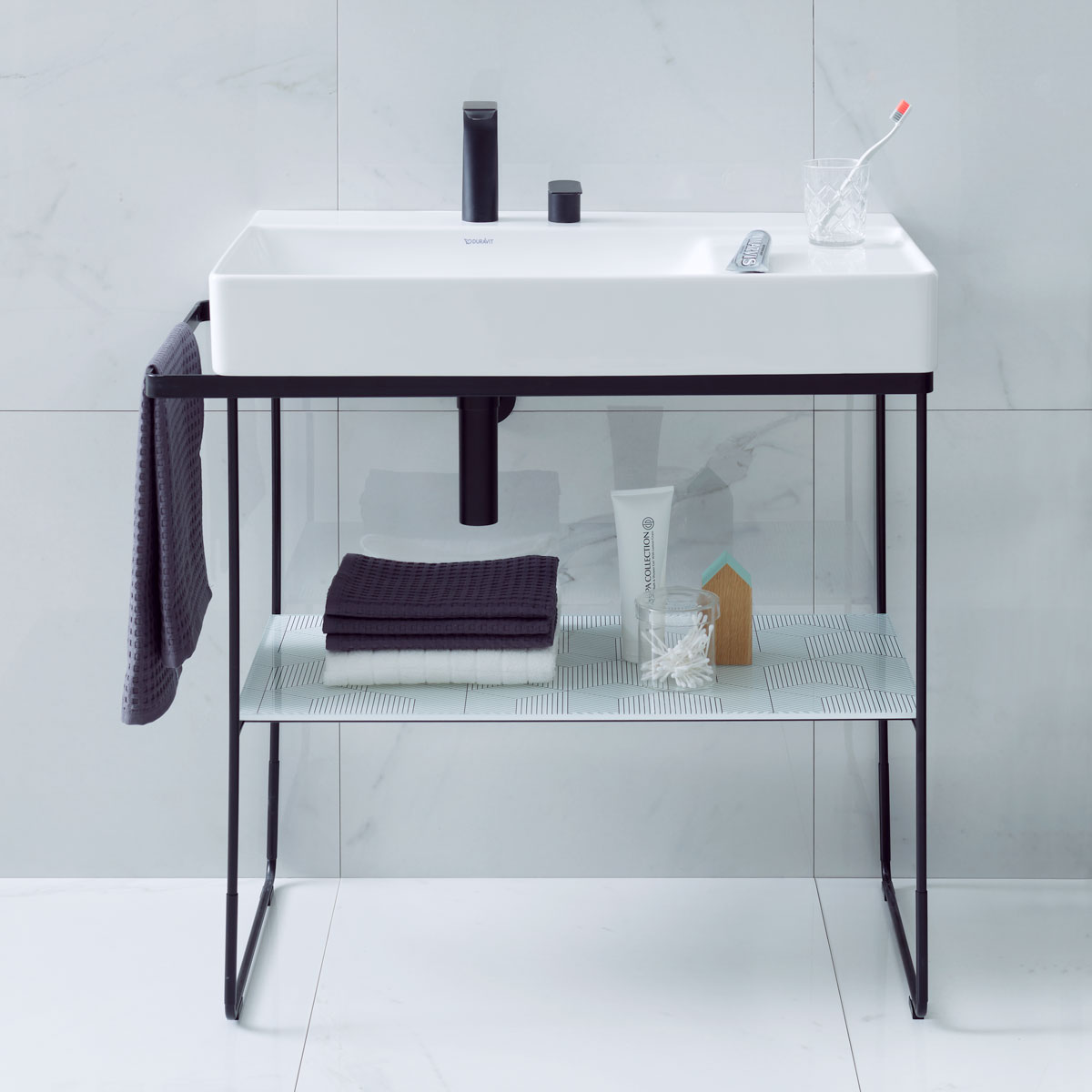
Note: Base vanity units/metal frames and sinks can be combined flexibly, depending on the model. This of course depends on the type of support and sink that are chosen. One concern that also applies here is the type of the ceramic, i.e. whether it is polished or unpolished.
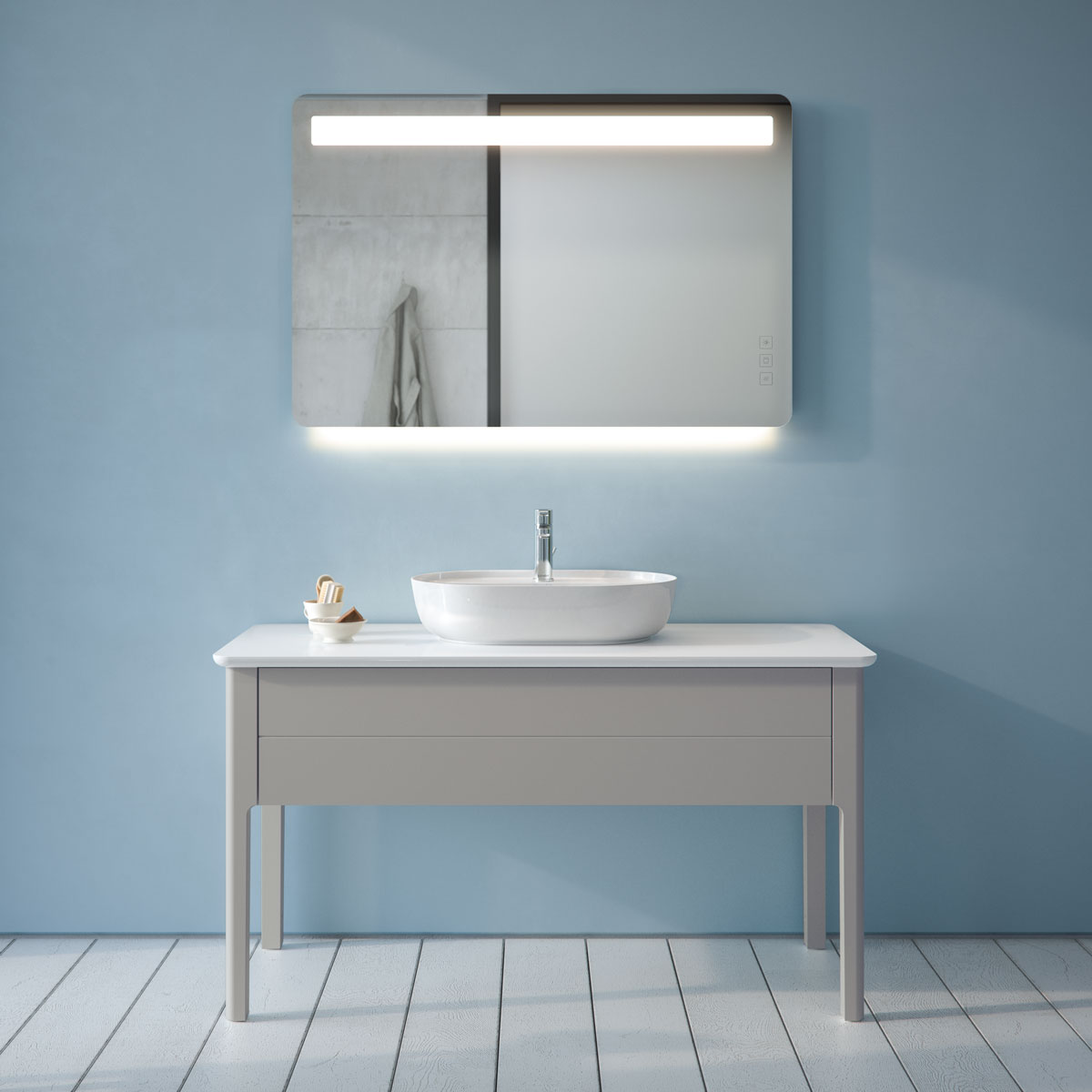
Polished underside:
The ceramic sink is designed to be combined with a console countertop (also: a vanity counter). The sink will sit perfectly on the countertop beneath it thanks to its polished underside. This type of sink can optionally be expanded with a vanity unit or another supporting structure.

Unpolished underside:
These sinks are often, but not always, coated in their entirety so they are optimally protected against any external damage. Unpolished sinks with a glazed underside can be mounted directly on the wall without any support. Countertop sinks, on the other hand, are combined with a suitable vanity unit.
This information can be found on the product pages.
If you are not sure which sink will fit in your bathroom or whether a sink can be combined with a bathroom vanity unit or not, please feel free to use the Duravit bathroom planner.
If you are not sure which sink will fit in your bathroom or whether a sink can be combined with a bathroom vanity unit or not, please feel free to use the Duravit bathroom planner.
Các ý tưởng sản phẩm bổ sung cho phòng tắm của bạn
Ý tưởng cho phòng tắm
Khám phá thế giới các sản phẩm kỳ diệu và phong phú của Duravit!
Showroom Duravit
Trải nghiệm trực tiếp tại các showroom của chúng tôi.
Thi công bởi các chuyên gia
Đại lý của chúng tôi sẵn sàng giúp bạn lên kế hoạch chi tiết cũng như kết nối với các đơn vị liên quan để đảm bảo quá trình thi công chính xác và chuyên nghiệp.



